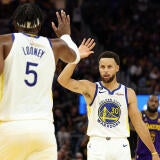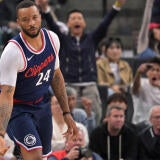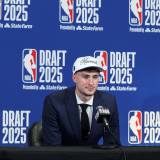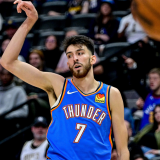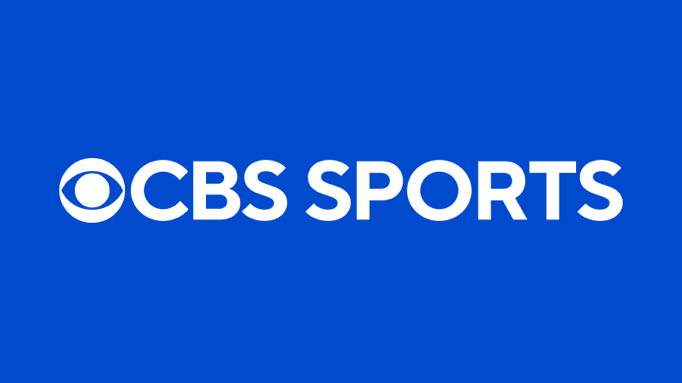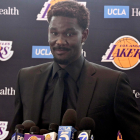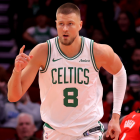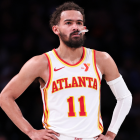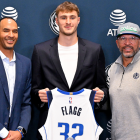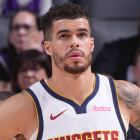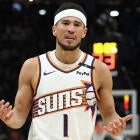
How Pacers were built: Paul George trade kicked off series of smart moves that led to NBA Finals appearance
The Pacers have acquired Tyrese Haliburton, Pascal Siakam and other key pieces through a series of high-reward moves
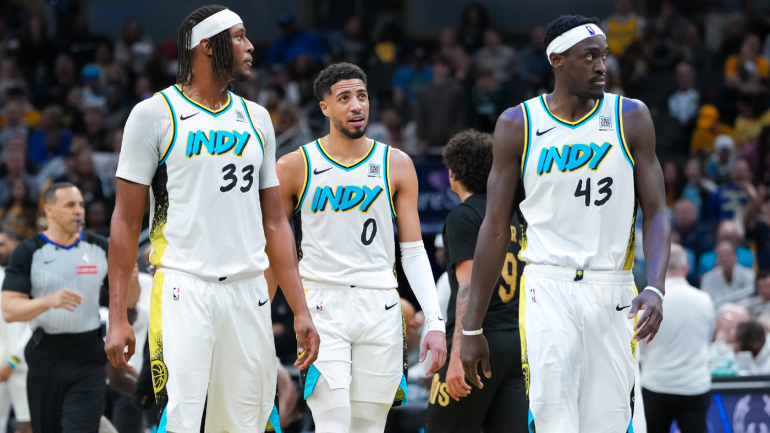
The Indiana Pacers have returned to the NBA Finals for the first time in 25 years. No one expected this would be the team to make it out of the Eastern Conference, but the Pacers have certainly earned their place after knocking off the top-seeded Cavaliers and beating a Knicks team that many expected to win the East finals. The Pacers have proved a lot of people wrong in this postseason, and will now face their toughest task of them all against a juggernaut Oklahoma City Thunder team for the chance to lift the Larry O'Brien trophy.
But how did Indy get here? This Pacers team didn't just spawn overnight. They're also not a team that has been a dominant force or made a ton of splashy moves. The story of how this Indiana team was built is one of small-risk, big-reward moves. Ahead of the NBA Finals starting on Thursday let's look at the moves and decisions that built the 2025 Pacers.
1. From Paul George to Haliburton
Like the Thunder, this current iteration of the Pacers can really be traced back to a Paul George trade in 2017. It's not as direct as Oklahoma City trading him for their MVP point guard, but if Indiana hadn't dealt George to OKC, it wouldn't have gotten them the pieces that eventually turned into Tyrese Haliburton.
For context, George was entering the final year of his contract and did not intend to re-sign with the Pacers, so Indiana dealt him to the Thunder a year before his contract ended to get something in return. The return package was two young guys in Victor Oladipo and Domantas Sabonis, both of whom would become Pacers mainstays for five seasons. Indiana made the playoffs just twice with those two part of its core, as well as Myles Turner who is still the longest-tenured Pacers player having been drafted by the team in 2015. But it was clear this wasn't anything more than a first-round team, not capable of seriously contending with the top of the East.
In the final year of the Sabonis-Oladipo era, the Pacers traded Oladipo to the Rockets, and the team finished the COVID-shortened season 34-38. It was then that Indiana decided to part ways with coach Nate Bjorksen who lasted just that one season, and brought in one of the most well-respected coaches in the league in Rick Carlisle, who just left the Dallas Mavericks.
With a new head coach and a need for some change, there had been rumblings about the Pacers breaking up its core, either trading Sabonis or Turner in the midst of a season where they were 19-36 approaching the trade deadline. Indiana ultimately traded Sabonis to the Sacramento Kings, who were desperate to find a versatile forward to pair with who they thought was their franchise centerpiece in De'Aaron Fox. Sacramento sent Haliburton to the Pacers, in what was -- and still is -- a shocking decision given Haliburton's ascension with the Kings and obvious upside. But the Kings bet on Fox to be their star point guard -- and they just traded him to the Spurs this past February.
The Kings had one quality season with Sabonis and Fox as their core, and now the Pacers are playing for an NBA championship with Haliburton as their star. In Sacramento's defense, Haliburton's fit next to Fox wasn't seamless, both guys need the ball in their hands to be effective, especially Haliburton who operates more like a traditional floor general than a guard who is regularly going to get you 30 points a night. And while there was optimism that he'd be a really good player, no one could've predicted him leading a team to two-consecutive conference finals appearances and an All-NBA selection.
Haliburton was just 21 at the time of the trade, and the Kings were working on a quicker timeline. But still, just three years later, the Pacers are in the NBA Finals in large part because of Haliburton, and the Kings are looking like the 2023 Chicago Bulls with a grim future ahead.
2. Draft wins and smart trades
With Haliburton in tow, the Pacers' plan was to build around Haliburton, and the summer of 2022 was the first step in overhauling the roster and reimagining what this team was going to look like. They already had Turner and TJ McConnell, the latter of whom they signed in free agency back in 2019. But the Pacers, much like the city of Indianapolis in which they reside, are not a team that makes flashy signings. Yes, now Haliburton is a star, but that's not the player they traded for. So Indiana made moves that have paid off.
They traded Malcolm Brogdan to the Celtics for Aaron Nesmith, who has become a defensive menace and quite literally is the reason the Pacers won Game 1 of the Eastern Conference finals against the Knicks. Had Nesmith not scored 20 points in the fourth quarter to even put Haliburton in position to hit a game-tying jumper to send the game to overtime, that series looks a lot different, and I'm probably writing about how the Knicks were built ahead of the NBA Finals.
The Pacers then used the 2022 draft to take Bennedict Mathurin sixth overall, and far more importantly took Andrew Nembhard with the 31st pick. Mathurin's had his ups and downs over the last few seasons, but he started to peak near the end of the conference finals. Nembhard is Indiana's best perimeter defender, and had Jalen Brunson in absolute hell at the end of that series. By the start of the 2022-23 season, the Pacers already had four of the five guys who have been their starting lineup for this playoff run.
Indiana had most of its current core, but it didn't translate to winning just yet. Haliburton earned his first All-Star appearance during the 2022-23 season, and Mathurin finished fourth in Rookie of the Year voting, but there were just too many inexperienced guys to make the jump to the playoffs. So the front office continued to add pieces in the summer of 2023. That year's draft netted them Ben Sheppard, who was useful against the Knicks if only for when Nembhard and Nesmith would get in foul trouble, and he's shooting just south of 40% on low volume 3s. They also did a draft-night swap of Bilal Coulibaly to the Wizards for Jarace Walker, giving them depth in the frontcourt.
Those aren't home runs, but the Pacers are really good at hitting singles and doubles, which is what they did when they traded two second-round picks to the Knicks for Obi Toppin that summer. Toppin wasn't given consistent opportunity with the Knicks, and in two seasons with the Pacers has averaged career highs each year, while becoming a much improved 3-point shooter. His athleticism also fits perfectly into this Pacers team that likes to run the floor. The summer 2023 moves were enough to make the Pacers a playoff contender for the 2023-24 season, but they were still missing something to really put them over the edge.
3. The Siakam trade
By January 2024, the Pacers were 23-17, sitting in the No. 7 spot in the East. They were a playoff-bound team but needed a No. 2 option behind Haliburton, and preferably a natural forward so that Nesmith and Mathurin weren't playing out of position. At the same time, the Toronto Raptors were having a fire sale breaking up the remaining pieces of their 2019 championship core, having already let Fred VanVleet walk in free agency the summer before, and trading OG Anunoby to the Knicks.
The last piece the Raptors were looking to move was Pascal Siakam, who quite literally was the perfect fit for the Pacers. Toronto got Bruce Brown, Jordan Nwora, Kira Lewis Jr., and three first-round picks for Siakam. Indiana got the forward that would address their weaknesses, and entered the playoffs as the No. 6 seed.
With Siakam supplanting Haliburton as the No. 1 scoring option, it allowed the star guard to pivot to his more preferred style of play: being a table-setter first and a scorer second. Then the Pacers made waves in the 2024 playoffs. They got past higher-seeded Bucks and Knicks teams as both dealt with injuries. Indy then faced an impenetrable force in the Boston Celtics in the East finals. That went about as well as you could expect, and the Pacers got swept ending what many felt like was a miracle run given the circumstances of their opponents to that point. At the conclusion of the 2023-24 season, the Pacers didn't add any significant pieces to the roster, instead they opted to run it back with the same group hoping for different results.
A slow start to this season, especially by Haliburton, felt like the 2024 conference finals run was a bit of a fluke. You could argue that Indiana simply beat injured teams, and were dominated as soon as they faced a healthy one. But after the calendar flipped to 2025, Indiana began to rattle off wins in bunches. They finished the season 20-4, the third-best record in the league, and entered the playoffs as the fourth seed in the East. Haliburton returned to All-Star form, averaging 20 points and 11 assists, while shooting over 50% from the field and 45% from 3-point range.
Indiana again beat an injured Bucks team, and proved most everyone wrong in the second round when they knocked off the top-seeded Cavaliers. The Pacers overwhelmed Cleveland with their rapid-pace, five-out offense and played defense at a level that allowed them to get stops and force turnovers, leading to transition scoring that ranks the highest of any team in the postseason. The Knicks series was the real battle, but Indiana proved its ability to win close games and perform well under pressure.
The Pacers are now four wins from the team's first NBA title, and their journey to get here is atypical of what we've seen from previous champions. This isn't a roster built around multiple superstars. There's not a ton of high-lottery talent like the Thunder have, either. Indiana got here because of smart signings and draft picks, knowing when to pivot to a rebuild before it was too late and building a roster where nearly every player complements each other.
This is a team perfectly built for the moment, and while they may be major underdogs against the Thunder (+500 on DraftKings), we've seen countless times now how well the Pacers perform when everyone is counting them out.
![[object Object] Logo](https://sportshub.cbsistatic.com/i/2020/04/22/e9ceb731-8b3f-4c60-98fe-090ab66a2997/screen-shot-2020-04-22-at-11-04-56-am.png)


